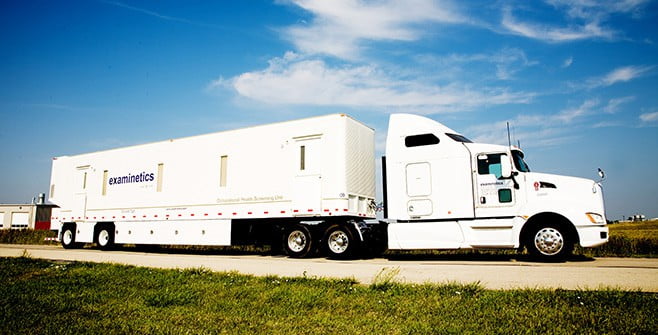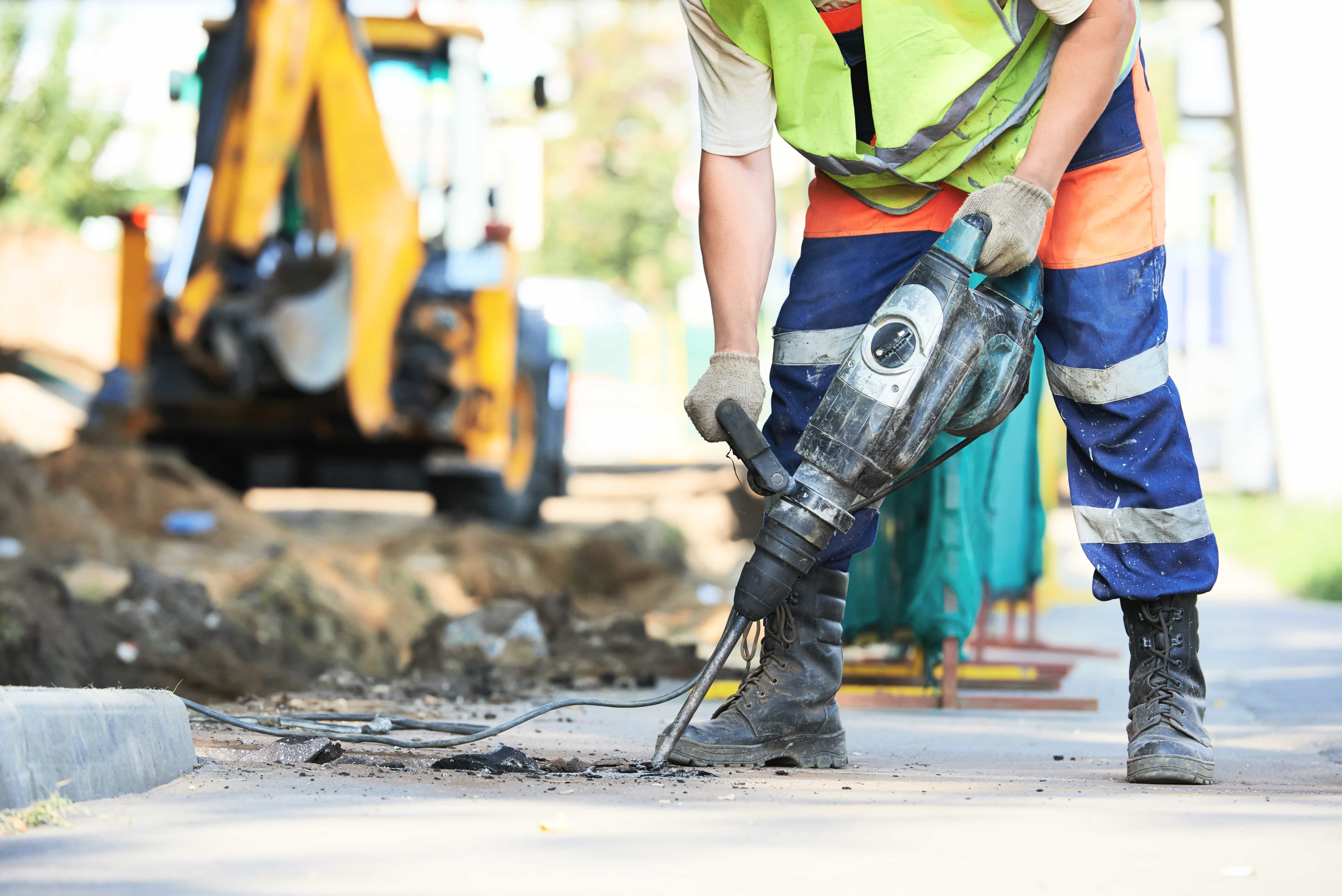Silica Medical Exams
Stay compliant with OSHA's Respirable Crystalline Silica standards - 29 CFR 1926.1153 (Construction) and 29 CFR 1910.1053 (General Industry & Maritime)
Crystalline silica is a common material found in raw form from soil, sand, stone, mortar, and concrete. On worksites that involve cutting, sawing, drilling, and crushing, silica becomes fine airborne dust, which impairs workers' safety. Respirable, or breathable, crystalline silica is 100 times smaller than a grain of sand and can easily enter the lungs of employees. Nearly 2.3 million American workers are exposed to dangerous respirable crystalline silica dust every day.
Examinetics offers comprehensive medical exams to keep you compliant with the OSHA Silica Standard and the new MSHA Silica Rule. Our team has conducted thousands of silica exams on workforces across the U.S. Through extensive experience, our medical team can provide guidance into understanding and adhering to the regulations and keeping your employees safe. We can also help you find specialists in pulmonary disease and occupational medicine.
Silica exams on your terms

We deliver medical exams accross the country with flexible options to meet your needs.
7 Challenges Implementing the OSHA Silica Standard
Examinetics offer comprehensive medical exams to help you stay compliant with OSHA standard. Our Silica health screenings provide the following services:
- Respirator/Silica questionnaire
- Height, weight and vitals
- Pulmonary function test
- X-rays with B reading
- Physician exam
- TB screening
- Respirator and silica medical clearance reporting
- Employee’s medical data stored in our XM solutions platform

Updated 2024 MSHA Respirable Crystalline Silica Standard
The Mine Safety and Health Administration (MSHA) published their final rule, "Reducing Miners’ Exposure to Respirable Crystalline Silica," on April 18, 2024. This ruling updates previous federal standards to enhance protection for U.S. miners against health risks associated with respirable crystalline silica exposure. This comes after a rise in silica-induced conditions, with about 250,000 U.S. miners set to benefit from the changes.
Coal mine operators must comply within 12 months from the publication date.
Metal and Nonmetal (MNM) mine operators have 24 months to comply.
The formal effective date for the new regulations is June 17, 2024.
Key updates of the MSHA Silica Standard:
Contact us today to learn how Examinetics can help you stay compliant with the MSHA Silica Standard.
Guide to the MSHA Respirable Crystalline Silica Standard 2024
Silica: The Good, The Bad and The Ugly
The Good
From health supplements and cellphones to the bricks of our homes, silica is a key ingredient in a vast number of modern products and basic essentials.
Most commonly, the type of silica called crystalline silica is found in ordinary products such as glass, pottery, bricks, mortar and artificial stone. Without silica, houses, roads and transportation wouldn’t exist as we know them.
Commercially, silica is in many health supplements used largely for skin health and joint and bone care. It may also be used in blood pressure and high cholesterol medication.
Additionally, the construction of technological equipment such as computers and phones contain crystalline silica. On a broad scale, silica is essential in the infrastructure of the internet, renewable energy and telecommunications.

The Bad
While silica’s benefits to society are numerous, it can also cause illness. When silica becomes respirable, it becomes dangerous. This occurs primarily on worksites involving cutting, sawing, drilling, or crushing silica. Nearly 2.3 million American workers are exposed to dangerous crystalline silica dust every day.
Breathing in crystalline silica dust is toxic and leads to severe health implications. Some of the issues/illness from crystalline silica dust include:
- Bronchitis - This involves the inflammation of the bronchial tubes which leads to chest congestion, wheezing and coughed-up mucus.
- Systemic autoimmune diseases
- Lupus - This is a disease that affects skin, blood cells, heart, lungs and joints. Lupus has no cure, but symptoms can be managed.
- Rheumatoid arthritis - This is a disorder which causes severe inflammation to joints as well as damage to skin, eyes, lungs and heart.
The Ugly
The most common illness from silica dust is silicosis. When you inhale small crystalline silica dust, it embeds itself in the lungs, which, after a time, inflame and scar. There are several forms of silicosis.
- Chronic silicosis – This is the most common form of silicosis, which slowly occurs within 10 to 30 years of exposure. Symptoms include damaged lungs with scarring, difficulty in breathing and coughing. Extreme cases, called complicated silicosis, lead to heart disease.
- Accelerated silicosis – This type is similar to chronic, however, occurs at an accelerated rate, within the first five years of high-level exposure.
- Acute silicosis – After high exposure, symptoms may occur within weeks. Symptoms include cough, weight loss, fever and fatigue.
While typically caused by smoking, lung cancer is also a danger of silica dust exposure. Symptoms of lung cancer include a consistent cough, chest pain, coughing up blood, shortness of breath, bone pain, headache and loss in weight.
The Treatment
To protect yourself from respirable silicosis and other ailments, the best practice is to decrease exposure to respirable crystalline silica. Worksites grinding, crushing or drilling rock, mortar or concrete should create a preventative action plan against respirable crystalline silica exposure. NIOSH recommends the following ideas:
- Educate yourself and others on the dangers of breathing crystalline silica dust. Awareness is key.
- On worksites, use water spray systems and appropriate ventilation in confined areas.
- Wear a respirator on the worksite when working around products/objects containing crystalline silica. Even if you cannot see the dust, you may still be at risk.
- Wash hands before and after working in dust-covered areas.
- Keep your clothes and body clean after leaving dusty workplace.
- Most importantly, NIOSH recommends all employee take advantage of medical and wellness screenings. Health screenings alleviate risk and track longstanding health effects to exposures on the job to keep workers safe and protected.
Employers should be aware of OSHA’s two respirable crystalline silica standards to protect workers: one for construction and the other for general industry and maritime.
Sources